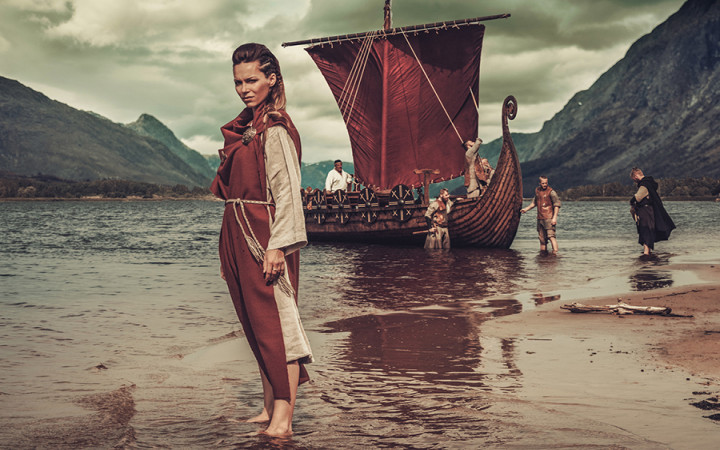Today’s Wonder of the Day was inspired by Kathryn from Taumarunui . Kathryn Wonders, “Who were the Vikings?” Thanks for WONDERing with us, Kathryn!
When you think of Vikings, what comes to mind? Fans of the National Football League might immediately think of the professional football team from Minnesota. But we're not talking about the purple-clad Minnesota Vikings.
Instead, we're thinking of those other Vikings you've probably learned about at one time or another. You know the ones: a band of big, burly, blond, bloodthirsty bullies on a boat. With huge horns on their hats, they sailed to unsuspecting coastal villages to pillage and plunder.
You've probably seen those types of Vikings on cartoons and television shows. They're also popular in fantasy novels that mine the depths of Viking lore and mythology. But are these common portrayals of Vikings accurate? And do these people still exist today?
Given how Vikings are often portrayed in books and movies, it probably won't surprise you to learn that the Vikings were quite a bit different in real life. In fact, the Vikings, sometimes called Norsemen, weren't even a single nation and didn't consist of a single race or people group.
The word "Viking" is often associated with the Scandinavian word vikingr, which means "pirate." However, rather than a noun, Scandinavian people actually used "viking" as a verb to refer to the act of exploring overseas ("to go viking").
Moreover, these overseas expeditions weren't limited to raids but also included searching for trading partners. As such, the Vikings weren't defined so much by who they were but by what they did.
Historians trace the beginning of the Viking age to a raid in 793 on the monks of Lindisfarne, a tiny island off the northeast coast of England. The library was destroyed, church treasures were stolen, and many monks were killed or taken prisoner. This brutal raid set the tone for how Vikings would be portrayed throughout history.
Raids along coastal areas throughout northern Europe continued over the course of the next few centuries, ending around the time of the Norman Conquest of England in 1066. Although always attributed to the "Vikings," these raids were carried out by many different peoples from the areas we now know as Scandinavia, including Denmark, Norway, and Sweden.
Although these people came from many different backgrounds, they were all called Vikings because they shared a few common traits: they were foreigners, they weren't Christian, and they weren't civilized compared to mainland European standards.
However, the Vikings didn't spend all their time pillaging and plundering. They farmed their lands back home during the growing season and went exploring after harvest time. Because food was often scarce and conditions were harsh where they lived, they were also often smaller than depicted in myths and legends.
They didn't wear giant horned helmets, but they were intrepid explorers who were great at building lightweight boats. In fact, they discovered the Americas long before Columbus, reaching Newfoundland sometime around the year 1000.
So do Vikings still exist today? Yes and no. No, to the extent that there are no longer routine groups of people who set sail to explore, trade, pillage, and plunder. However, the people who did those things long ago have descendants today who live all over Scandinavia and Europe.
In fact, in many Scandinavian countries, there are large groups of people who dedicate their lives to living as the Vikings did long ago. For example, both Norway and Sweden have Viking villages filled with people who live like Vikings in the modern era, recreating the tools, boats, and ways of life the Vikings established over a century ago.




